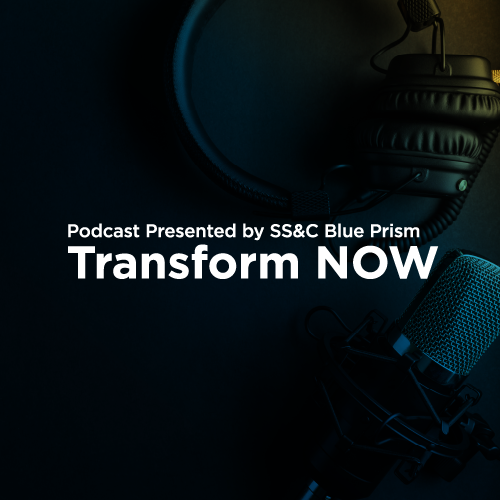Welcome to Transform NOW: The Automation Podcast for Business Leaders
Welcome to our Transform NOW podcast, your go-to place for all of the best automation stories, brought to you by the people paving the way.
Listen now to discover:
- How organizations are combining traditional robotic process automation (RPA) with other automation technologies to achieve critical business outcomes.
Here’s what else you’ll learn:
- How organizations are scaling their automation capability to adapt and thrive in a digital age.
It’s all about making work better through automation. Listen directly on your favorite streaming service below.
Dive into the world of advanced automation on Spotify. Explore 'Transform NOW', where we unravel the relationship between robotic process automation (RPA) and cutting-edge technologies for transformative business solutions.

Join us on Apple Podcasts for 'Transform NOW' and embark on a journey to understand how RPA, combined with innovative automation, is reshaping businesses for a digital future.


What you'll learn in our automation podcast
In each episode, you’ll get the inside scoop on how to use intelligent automation (IA) technologies to accelerate your business transformation. Hear from business leaders and technology experts as they guide you through their stories, advice and best practices for automation. Whether you’re in banking, business services or somewhere in between, you’ll find IA stories to help you realize the best transformation strategies.
- Learn expert automation best practices and advice.
- Discover how to use AI and automation to drive business outcomes.
- Hear about industry trends, strategies and the future of automation.
Who you'll hear from in this automation podcast
Join our automation expert hosts Brad and Michael as they delve deep into topics such as AI and automation, industry trends and the future of work. Learn about the power of automation from industry leaders, technology founders, analyst firms and consultancies – with previous guests including thought leaders from McKinsey, Bain & Company and many more world-leading organizations.
- Listen to automation expert conversations.
- Hear from our customers about their automation journey and best practices.
- Learn from authors, academics and other thought leaders in automation and AI.


